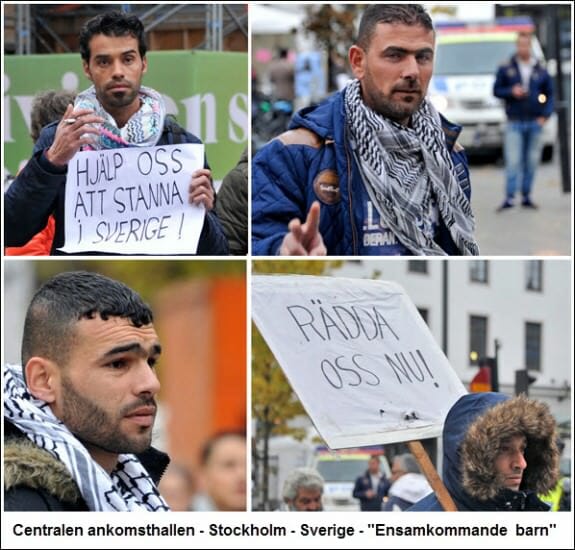Hurricane Harvey of 2017 is tied with 2005’s Hurricane Katrina as the costliest tropical cyclone on record, inflicting $125 billion in damage, primarily from catastrophic rainfall-triggered flooding in the Houston metropolitan area and Southeast Texas. It was the first major hurricane to make landfall in the United States since Wilma in 2005, ending a record 12-year span in which no hurricanes made landfall at the intensity of a major hurricane throughout the country. In a four-day period, many areas received more than 40 inches (1,000 mm) of rain as the system slowly meandered over eastern Texas and adjacent waters, causing unprecedented flooding…
The eighth named storm, third hurricane, and first major hurricane of the extremely active 2017 Atlantic hurricane season, Harvey developed from a tropical wave to the east of the Lesser Antilles, reaching tropical storm status on August 17. The storm crossed through the Windward Islands on the following day, making landfall on the southern end of Barbados and a second landfall on Saint Vincent. Upon entering the Caribbean Sea, Harvey began to weaken due to moderate wind shear, and degenerated into a tropical wave north of Colombia, late on August 19. The remnants were monitored for regeneration as it continued west-northwestward across the Caribbean and the Yucatán Peninsula, before redeveloping over the Bay of Campeche on August 23. Harvey then began to rapidly intensify on August 24, regaining tropical storm status and becoming a hurricane later that day. While the storm moved generally northwest, Harvey’s intensification phase stalled slightly overnight from August 24–25; however, Harvey soon resumed strengthening and quickly became a major hurricane and attained Category 4 intensity later that day. Hours later, Harvey made landfall at San José Island, Texas, at peak intensity, followed by another landfall at Holiday Beach at Category 3 intensity. Afterwards, rapid weakening ensued, and Harvey had downgraded to a tropical storm as it stalled near the coastline, dropping torrential and unprecedented amounts of rainfall over Texas. On August 28, it emerged back over the Gulf of Mexico, strengthening slightly before making a fifth and final landfall in Louisiana on August 29. As Harvey drifted inland, it quickly weakened again as it became extratropical on September 1, before dissipating two days later. (Wikipedia)
Hurricane Harvey is the latest example of covert weather warfare being waged on completely unsuspecting populations. Increasingly catastrophic climate cataclysms are being orchestrated and manipulated by an ever more desperate and aggressive global power structure. Rapidly accelerating climate and biosphere collapse is not somewhere on the horizon, it is here, now. Climate engineering is further fueling the unraveling of the remaining web of life on our once thriving planet. With undeniable facts and film footage this video fully exposes the manipulation of Hurricane Harvey.
Sharing credible and verifiable data is absolutely crucial in the fight to expose and halt the ongoing climate engineering assault. When incorrect or false data is propagated, the critical cause of exposing and halting climate engineering is harmed. Investigate, become familiar with the most inarguable building block facts, and make your voice heard.
Dane Wigington
To follow Dane on Facebook, click here: https://www.facebook.com/dane.wigingt…
To follow the latest GeoengineeringWatch.org videos please subscribe to Dane’s four youtube channels below:
- Dane Wigington https://www.youtube.com/c/DaneWigington
- Geoengineering Watch https://www.youtube.com/c/Geoengineer…
- GeoengineeringWatch.org https://www.youtube.com/c/Geoengineer…
- Geo Watch https://www.youtube.com/c/GeoWatch
The latest and most effective GeoengineeringWatch.org awareness raising materials can be found at the links below:
- 2 sided color glossy informational flyers: http://www.geoengineeringwatch.org/ads/
- 20 page fact and photo summary booklets: http://www.geoengineeringwatch.org/cl…
To support GeoengineeringWatch.org: https://www.paypal.com/donate/?token=…
There are countless ways to see Harvey is not “Mother Nature,” but watching it disappear and refuel with massive Water Vapor Bursts three days in a row (at exactly the same time of day and from exactly the same areas), proves beyond any reasonable doubt, that this catastrophe was manmade.
The storm system was deliberately refueled for a second time with massive On-Land Water Vapor Generation, as well as Massive Water Vapor Generation streaming from the Rapid Evaporation “Firehose” in the Gulf. As is always the case, the streaming water vapor made pushing it past saturation (for the third round of torrential downpour) easy, which you can plainly see by the explosion of deluge, as soon as it hit the On-Land Water Vapor Generators.
Hurricane Harvey was a Category 4 storm that hit Texas on August 25, 2017. It caused $125 billion in damage according to the National Hurricane Center. That’s more than any other natural disaster in U.S. history except Hurricane Katrina. Texas Governor Greg Abbott needed more than $125 billion in federal relief. It affected 13 million people from Texas through Louisiana, Mississippi, Tennessee, and Kentucky. As of October 13, 2017, at least 88 people died from the storm.
Harvey made landfall three times in six days. At its peak on September 1, 2017, one-third of Houston was underwater. Two feet of rain fell in the first 24 hours. Flooding forced 39,000 people out of their homes and into shelters. Dallas created a mega-shelter for 5,000 evacuees out of its main convention center.
Harvey had a considerable economic impact. The Houston metro area is the nation’s fourth largest city with 6.6 million residents. If it were a country, it would be the world’s 23rd largest economy, larger than Poland or Sweden.
The Facts on Hurricane Harvey’s Damage
Hurricane Harvey damaged 204,000 homes. Three-fourths were outside of the 100-year flood plain. Those homeowners did not have flood insurance.
There were 738,000 people who registered for assistance with the Federal Emergency Management Agency. The agency has paid $378 million to them. Immediately after the storm, it delivered 80 tractor-trailer loads of emergency supplies. These included cots, blankets, and meals.
Federal forces rescued 10,000 people who were trapped in their homes or on flooded highways. A flotilla of private boats rescued an unknown number of additional victims. The Houston Police Department’s Dive Team rescued 3,000 people in four days. Houston police officer Austin Huckabee said he and four other officers saved 40 people in the first 24 hours.
There were 37,000 people in shelters in Texas and 2,000 in Louisiana. Almost 7,000 people were in the George R. Brown Convention Center, where 1,700 received medical treatment. FEMA moved 14,900 to temporary housing. As of the first day of September, 8,000 families had moved into 9,000 hotel rooms.
As of September 14, at least 3,900 homes were without power. There were 77 boil-water notices in effect, 19 water systems were down, and 31 wastewater systems remained offline. Houston’s school district said 75 of its 275 schools were closed due to flood damage. The district is the nation’s seventh largest. In the Gulf area, 1 million vehicles were ruined beyond repair, according to auto data firm Black Book. That includes 300,000 to 500,000 vehicles owned by individuals.
Harvey flooded 800 wastewater treatment facilities and 13 Superfund sites. That spread sewage and toxic chemicals into the flooded areas. The highest storm surge was 12.5 feet in Aransas County. It did not create a lot of damage to humans or property because it occurred in a wildlife refuge.
Harvey’s impact spread across the country as gas prices rose. Harvey forced 25 percent of oil and gas production to shut down in the region. That affects 5 percent of nationwide output. As of September 29, 2017, The Daily Shot reported that refinery activity remained at multi-year lows.
Gasoline production is still down. U.S. average gas prices rose from $2.35 a gallon before Harvey hit to $2.49 a gallon on August 31, 2017. Harvey affected the Northeast, since it relies on pipelines from the Gulf for its gas. To maintain supply, the Department of Energy released 500,000 barrels of oil from the Strategic Petroleum Reserve. By September 5, gas prices had returned to pre-Harvey levels.
Rainfall
Total rainfall hit 60.5 inches in Nederland, Texas. That’s a record for a single storm in the continental United States. It created a 1-in-1,000-year flood event. Nothing of that size has happened within modern recorded history. Flooding covered southeast Texas the size of the state of New Jersey. Thirty inches of rain fell on an area near the coast the size of the state of Maryland.
Houston lies in Harris County. Its Flood Control District meteorologist Jeff Lindner reported that a foot and a half of water covered 70 percent of the 1,800-square-mile county. The sheer weight of the water depressed the Earth’s crust. Houston sank 2 centimeters as a result. It will rebound once the waters recede.
In comparison, Hurricane Katrina dropped 5-20 inches of rain in just 48 hours. Most of its flooding came from storm surges that overwhelmed the levee system.
Federal Aid Package
On September 8, 2017, President Trump signed a bill approving $15.25 billion in storm aid. It included an increase in the debt ceiling and an extension of government spending to December 8, 2017. Without a debt ceiling increase, the U.S. Treasury did not have enough to disburse the funds to FEMA. Houston received $91 million and Harris County received $44 million to pay for debris removal. The storm left 200 million cubic yards of debris.
Timeline
On August 25, 2017, Harvey hit Port Aransas and Port O’Connor near Corpus Christi with 130 mph winds. The category 4 hurricane left 250,000 people without power.
On August 26, Harvey moved on to Houston. It remained there for four days. Two reservoirs overflowed. The highways became waterways. Between 25 and 30 percent of Houston’s Harris County was flooded. That is an area as large as New York City and Chicago combined. It was home to 4.5 million people.
On August 29, Harvey made landfall for a third time as it hit the coastal cities of Port Arthur and Beaumont Texas on the border of Louisiana. It dumped 26 inches of rain in 24 hours. It flooded Port Arthur, a city of 55,000 people. Water entered one-third of the city’s building, including the shelter. Beaumont has been without drinking water since the storm.
On August 31, an Arkema chemical plant in Crosby, Texas, ignited. The chemicals required refrigeration to stay inert. When the storm disabled the cooling equipment, temperatures rose and the chemicals ignited.
On September 1, Harvey dropped 10 inches of rain on Nashville, Tennessee.
The “Global Warming Made Harvey Worse” Claims
Climatologists claimed that global warming contributed to Harvey’s impact. Studies found the amount of rainfall was 38 percent higher because of global warming. They claimed there are three reasons for that.
- First, the Gulf region air temperatures were 2-3 degrees Fahrenheit hotter than in the past. That allowed the air to hold more moisture.
- Rising sea levels made flooding more likely near Gulf Coast cities. The sea levels around Houston were six inches higher than 20 years ago. Warmer temperatures melted the ice caps in Antarctica. They have been shrinking at 1.6 meters per year, compared to 3.8 centimeters annually before 1992.
- Third, global warming stalled weather patterns in the region. That allowed Harvey to hover over Houston instead of moving back out into the ocean. The convergence of all three effects allowed Harvey to drop feet of rain instead of inches.
Global warming, however, is a hoax perpetrated by the powers-that-be to steal millions from the trusting masses of people. The storm was created and manipulated by this same evil cabal and their compliant climate engineers.
(This section has been modified from the original content on TheBalance.com
How Harvey’s Damage Compares to Other Natural Disasters
Harvey’s extensive damage was unusual. The most damaging hurricanes hit the densely populated East Coast. But Harvey remained over a major metropolitan area for a longer time than most hurricanes.
A few weeks after Harvey, Hurricane Irma began heading toward Miami, Florida. It was a Category 5 storm, the largest Atlantic storm ever. Its 185 mph winds lasted for 37 hours, a new record. It was fed by 86-degree waters. If Irma had hit Miami, the damage could have reached $300 billion, according to insurance firm, Swiss Re.
Source: The Balance



